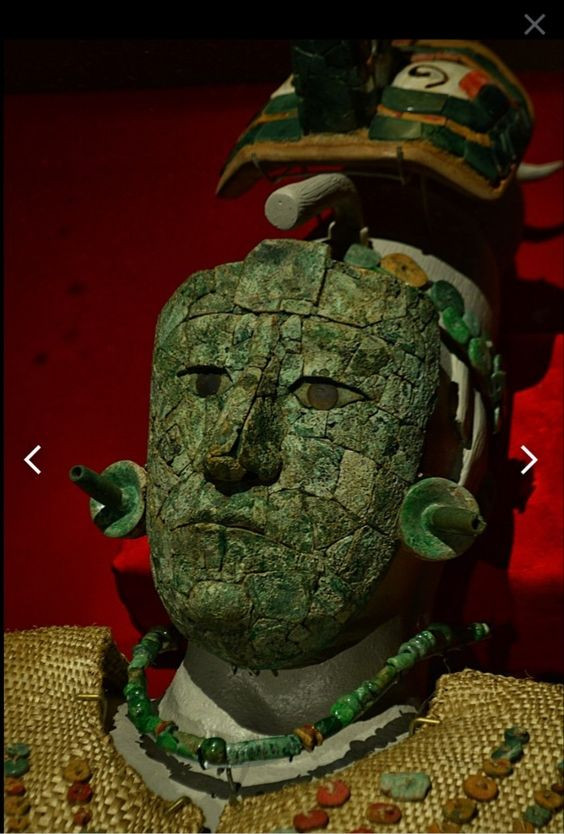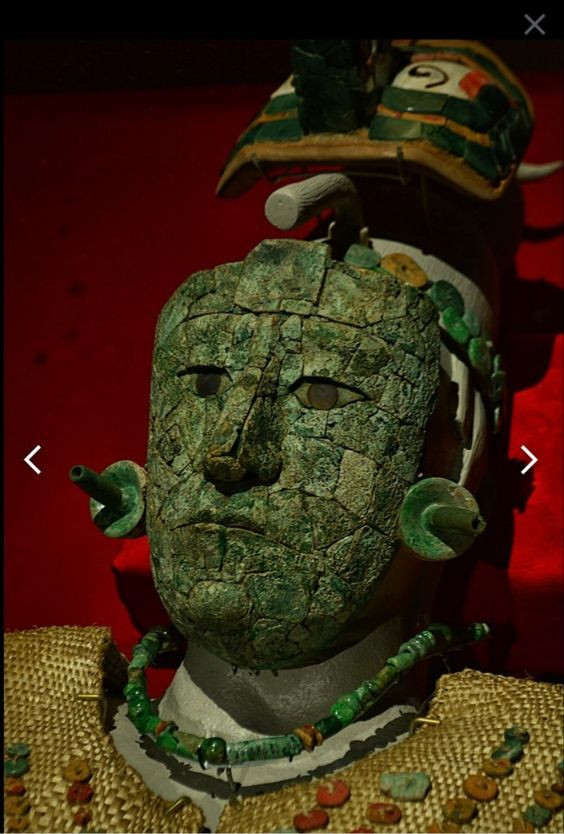Introduction
In the heart of Mexico City, the National Museum of Anthropology stands as a testament to the rich cultural heritage of the ancient Maya. Among its prized possessions are the awe-inspiring jade funerary artifacts that once adorned the illustrious ruler Pakal the Great, offering a tantalizing glimpse into the opulent world of this legendary Mayan king.
The Ruler Who Embodied Mayan Greatness
Pakal the Great, also known as K’inich Janaab’ Pakal, reigned over the Maya city-state of Palenque from 615 to 683 AD, ushering in an era of unparalleled prosperity and cultural renaissance. Under his visionary leadership, Palenque flourished as a center of art, architecture, and intellectual achievement, leaving an indelible mark on the annals of Mesoamerican history.
Pakal’s reign was marked by a series of impressive accomplishments that solidified his status as one of the greatest rulers in Mayan history. He oversaw the construction of the iconic Temple of the Inscriptions, which not only served as his final resting place but also showcased the architectural prowess of the Maya. Pakal was also a skilled military leader, successfully defending his kingdom from external threats and expanding Palenque’s sphere of influence.
But Pakal’s legacy extends far beyond his political and military achievements. He was a patron of the arts, fostering a cultural renaissance that saw the production of some of the most exquisite works of Mayan art and craftsmanship. From the intricate carvings adorning the walls of Palenque’s temples to the breathtaking jade funerary objects that adorned his burial chamber, Pakal’s reign was a golden age of Mayan artistic expression.

A Monarch’s Final Resting Place
Upon his death, Pakal the Great was interred in a grand burial chamber beneath the iconic Temple of the Inscriptions, a testament to his enduring legacy. It was here that archaeologists uncovered a treasure trove of jade artifacts, meticulously crafted and imbued with profound symbolic meaning.
The discovery of Pakal’s tomb was a momentous event in the field of Mesoamerican archaeology, shedding new light on the funerary practices and beliefs of the ancient Maya. The sheer opulence and attention to detail in the burial chamber underscored the immense power and status that Pakal commanded during his lifetime.

The Significance of Jade
In the world of the Maya, jade held immense significance, revered for its rarity, beauty, and spiritual properties. Believed to possess protective qualities and closely associated with fertility, royalty, and the gods, jade objects were highly prized by the elite and played a pivotal role in rituals, ceremonies, and burials.
The Maya believed that jade, with its vibrant green hues, was imbued with the essence of life and the sacred. It was seen as a conduit to the divine, a material that could transcend the physical realm and connect the living with the spiritual world. This belief is reflected in the intricate jade objects that adorned Pakal’s tomb, each one imbued with profound symbolic meaning and intended to aid the ruler in his journey to the afterlife.

Masterpieces of Lapidary Artistry
The jade burial objects of Pakal the Great represent the pinnacle of Maya lapidary artistry. Intricately carved masks, pendants, ear spools, and beads, each meticulously crafted from the finest jadeite, showcase the mastery of Maya artisans. These objects served not only as symbols of Pakal’s status and prestige but also as conduits for spiritual power and protection in the afterlife.
The attention to detail and the level of craftsmanship displayed in these artifacts is truly breathtaking. From the delicate filigree patterns adorning the pendants to the lifelike features of the death mask, each piece is a testament to the skill and artistry of the Maya craftsmen. These objects not only captivate the viewer with their beauty but also offer a glimpse into the rich cultural and spiritual beliefs of the ancient Maya.

The Iconic Death Mask
Among the most captivating artifacts is Pakal’s ornate death mask, which covered his face in death. Carved with remarkable skill and precision, the mask depicts the ruler in a serene and dignified pose, with eyes closed and lips slightly parted. The intricate detailing of the mask’s features, from the finely sculpted eyebrows to the delicately rendered headdress, speaks to the mastery of Maya artisans and their ability to imbue jade with profound meaning and beauty.
The death mask is not merely a work of art, but a powerful symbol of Pakal’s status and the Maya’s belief in the afterlife. By covering the ruler’s face with this exquisite jade artifact, the Maya artisans were ensuring that Pakal would be recognized and respected in the next world, his identity and legacy preserved for eternity.

Inscriptions of Eternity
Accompanying the jade burial objects are pendants adorned with hieroglyphic inscriptions, serving as both adornments and mnemonic devices, preserving Pakal’s name and deeds for eternity. These inscriptions offer invaluable insights into the ruler’s life, reign, and religious beliefs, providing a window into the complex cosmology of the ancient Maya.
The presence of these inscriptions underscores the Maya’s deep reverence for the written word and their belief in the power of language to transcend the boundaries of time and space. By preserving Pakal’s story in this manner, the Maya ensured that his legacy would endure long after his physical remains had returned to the earth.
A Legacy Preserved for Generations
Today, the jade funerary artifacts of Pakal the Great stand as a testament to the enduring power of art, culture, and spirituality to transcend the bounds of time and space. As visitors marvel at these extraordinary objects, they are transported back to the height of Maya civilization, where rulers like Pakal the Great ruled with wisdom and vision, leaving behind a legacy that continues to inspire awe and admiration.
Through the jade burial objects of Pakal, we are reminded of the indomitable human spirit and the enduring human quest for knowledge, beauty, and understanding. These artifacts serve as a bridge between the ancient past and the present, inviting us to explore the mysteries of the human experience and to appreciate the rich tapestry of cultures that have shaped our world.

Conclusion
The jade funerary artifacts of Pakal the Great are not merely objects of beauty and historical significance; they are windows into the vibrant and complex world of the ancient Maya. Through these extraordinary artifacts, we can glimpse the power, artistry, and spiritual beliefs of a civilization that left an indelible mark on the course of human history. As we continue to study and appreciate these treasures, we are reminded of the enduring legacy of the Maya and the timeless human desire to create, to understand, and to leave a lasting mark on the world.

